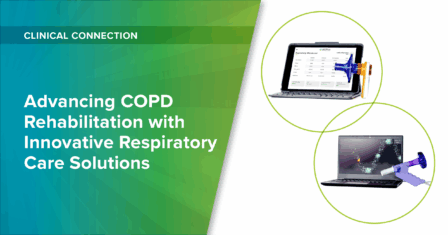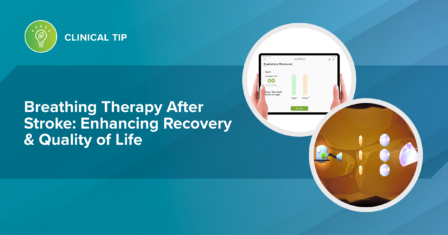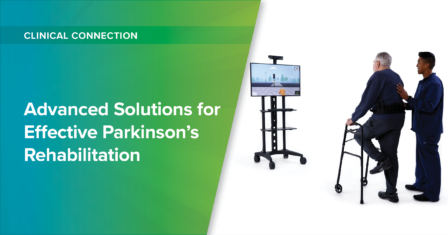Cardiac Management Including Advanced Rehab Technology
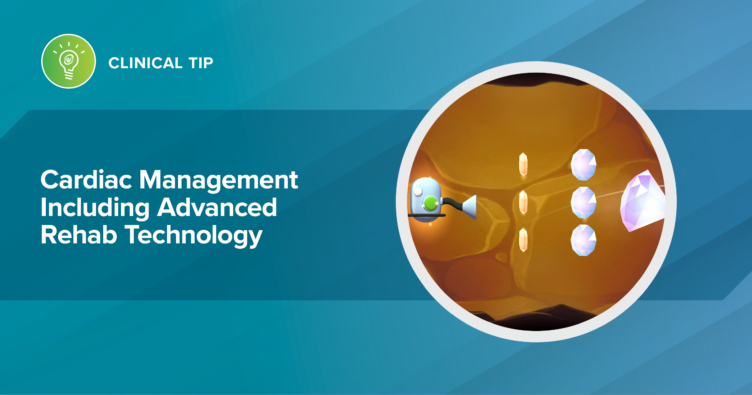
According to the CDC, coronary artery disease (CAD) is the most common type of heart disease in the US. It is caused by plaque build-up in the coronary arteries which slows blood flow. The most common symptom of CAD is chest pain. However, many people don’t have symptoms and only find out they have CAD after they suffer a heart attack.
Cardiac rehab (CR) helps prevent future heart attacks, improves physical function, and improves quality of life. A comprehensive cardiac rehab program includes physical activity, education, and counseling. Advanced rehab technology can play a role in cardiac management, improving breathing and physical activity for individuals with CAD.
- A Cochrane Review of exercise-based CR in people with coronary heart disease found that exercise-based CR reduced risk of heart attack, all-cause hospitalization, and cardiovascular mortality. (Dibben et al., 2021)
- In patients with stable angina, an 8-week inspiratory muscle training program improved respiratory and peripheral muscle strength, functional exercise capacity, and health-related Quality of Life. (Huzmeli et al., 2022)
- Cardiac rehab utilizing interactive virtual reality resulted in less pain, improved walking, higher energy levels, increased physical activity, and improvements in motivation and adherence. (García-Bravo et al., 2021)
OmniFlow® Breathing Therapy Biofeedback System has interactive customizable breathing exercises.

Deep Inhalation (Diamond Mine)

Rhythmical Breathing (Starry Road)
OmniVR® Virtual Rehabilitation System has interactive customizable seated and standing activities.
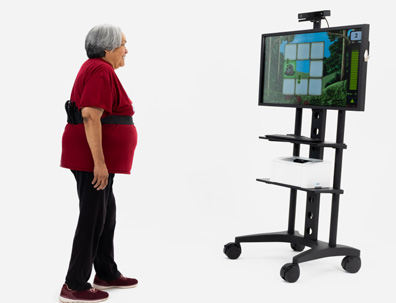
- Seated: knee AROM, leg strength (Picnic)
- Sit-to-Stand: trunk control, leg strength (Bingo)
- Balance and Gait: dynamic balance, multidirectional gait (Mole, Flower Garden)
- Gait: ankle/hip/stepping strategies (Walking the Dog)
- Upper Extremity: sitting/standing balance, timed UE motion, functional reach (Carnival)
References:
Dibben, G., Faulkner, J., Oldridge, N., Rees, K., Thompson, D. R., Zwisler, A. D., & Taylor, R. S. (2021). Exercise-based cardiac rehabilitation for coronary heart disease. The Cochrane database of systematic reviews, 11(11), CD001800.
https://doi.org/10.1002/14651858.CD001800.pub4
García-Bravo, S., Cuesta-Gómez, A., Campuzano-Ruiz, R., López-Navas, M. J., Domínguez-Paniagua, J., Araújo-Narváez, A., Barreñada-Copete, E., García-Bravo, C., Flórez-García, M. T., Botas-Rodríguez, J., & Cano-de-la-Cuerda, R. (2021).
Virtual reality and video games in cardiac rehabilitation programs. A systematic review. Disability and rehabilitation, 43(4), 448–457. https://doi.org/10.1080/09638288.2019.1631892
Huzmeli, I., Ozer, A. Y., Akkus, O., & Yalcin, F. (2022). The results of inspiratory muscle training on cardiac, respiratory, musculoskeletal, and psychological status in patients with stable angina: a randomized controlled trial. Disability and rehabilitation,
1–12. Advance online publication. https://doi.org/10.1080/09638288.2022.2146767
TOTM-00039
Latest Updates
Subscribe to stay up-to-date on our latest posts.

